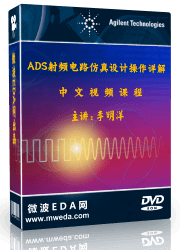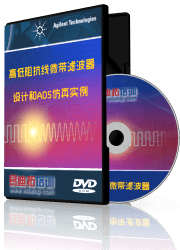- 易迪拓培训,专注于微波、射频、天线设计工程师的培养
what is the broadside angle for dipole antenna array?
what if array is on y-z plane, then broadside angle would be (90°, 0°), correct?
I really get confused reading some books that has all these angles upside down...like we need any more confusion.
Thanks.
The convention for antenna directivity seems to be that the antenna structure is in the X-Y plane, such that the radiation of the primary lobe is along the z-axis (theta = 0). Also, that the non-rotated structure puts the E-Field along the X-Axis (phi=0).
This is how one would place a wave-guide, or feed horn, or an entire Cassegrain dish Earth Station.
The spherical co-ordinate conventions used in reference books, antenna design handbooks, NEC2, NEC4 and others seem to have this common feature.
In your case of a dipole array, the lobe direction will depend on what phase the dipoles are fed, as well as the physical position (tilt?) of the entire array, but suppose for the moment, all are fed in phase, and the broadside radiation is along the Z-Axis. Then the co-ordinates (Theta, Phi) are (0,0).
For any radiation direction, Theta is then the angle between the Z-Axis and the radiation direction, and Phi is the other angle in the spherical co-ordinate pair.
now I'm even more confused...what do you mean by convention antenna structure is in x-y plane? It would be laid horizontally on x-y plane or vertically?
For the dipole that is laid vertically on x-z plane, the broadside is the y-plane at 90degrees. I find this in many books. I am telling you this is confusing and it seems everyone has their own convention and how they look at things.
kae_jolie
I am truly sorry for adding confusion. Let me try again.
It does not matter what the local co-ordinate system is, nor does it matter what is the orientation of the object relative to it, so long as the writer clearly states what his local convention will be. Clearly there are some obvious convenient orientations to choose. Where there is rotational symmetry, a dish antenna for example, we would choose to align the dish axis with one of the X, Y, or Z instead of pointing someplace arbitrary.
Cartesian (X, Y, Z) axes is convenient for description of surfaces, and devices like waveguides, dipoles, feed-horns, even big dishes. It does not matter which way up we happen to draw them, they are always each mutually orthogonal. Once we have the X-Y plane, then there is a choice of two Z-directions away from it.
Thus we get to the first common, though not universal nor exclusive "convention". The "right hand rule" used for vector cross-product. Forefinger along X, second finger along Y, the thumb gives the Z-direction.
http://en.wikipedia.org/wiki/Right-hand_rule
When we need to deal with vectors representing field strengths and propagation directions, the spherical co-ordinate system is more often used. Here we run into the "convention" that suffers multiple definition, and affects us most. The meanings of polar angle Theta and azimuthal angle Phi as commonly used in physics are reversed in mathematics. Also, they are described in a different order, with the result that the set (Rho, Theta, Phi) appear written the same but have different meaning.
For pictures, see
http://en.wikipedia.org/wiki/Spheric...rdinate_system
When it comes to radiation field patterns, all analysis I see uses physics-type spherical co-ordinates to describe the field vector, with the magnitude often normalized to 1 (0dB). The field magnitude is some function of the two angles Theta, and Phi. The X-Y plane is shown horizontal.
Often, one of the angles is fixed at zero, and the function then reduces to a "slice" through the 3D field to yield a Polar plot. For example, if Theta is fixed at pi/2 (90 degrees), the polar plot of a dipole parallel to the X-Y plane is the familiar "figure-of-eight".
If the dipole were oriented vertical, the same polar plot slice would be a circle. The electric field is vertical, and the antenna is omnidirectional. In 3-D, the field looks like a fat toroid wheel or do-nut.
I agree there is plenty of potential for confusion, especially when you have to deal with several co-ordinate systems together, (e.g) a feed horn displaced, tilted, and rotated, in a steerable antenna system using "2-axis X-over-Y" with a satellite also displaced, tilted, and travelling at an angle to the ecliptic plane.
Through all this, while it is mathematically correct and OK to set out any convention, it much reduces our work to try and choose a standard. The "convention" that I mentioned with X-Y plane horizontal, is the "physics" norm widely used in electromagnetics.
Thanks, Darktrax, for taking the time to clear this up for me. It actually makes sense now.
I would appreciate it if you could look at this recent post of mine at https://www.edaboard.com/thread260198.html I hope you could help me there, too.
Thanks a bunch.
I have downloaded the zip, but temporarily unable to see it until I can put it in a PC with HFSS
Even so , you can qualitatively imagine what is going to happen with the array.
I am assuming the dipoles are all pointing radially outward from the circle centre.
First pretend you have switched off the middle three, and are only driving the two at opposite ends of the semicircle.
Then also, imagine temporarily you turn them both to face the same direction. Think of a plane wave arriving from a distant station. The signals will be in phase, and the gain will be +3dBd or +5.15dBi unless the circle is so small the ends of the dipoles get close enough to affect each other. The impedance of each dipole will be 73 Ohms or less, depending on that same closeness, and how close the whole thing is to the ground, or grounded surface, and maybe how thick the elements are.
Now imaging a signal coming from a distant station some degrees to the side. The signal will arrive at the nearer dipole first. and the second dipole will have a delayed phase version. If the array is large enough, then at some angle, the combined signals phase will be opposite, to cancel, and so create a deep null in that direction. If instead, you do not rely on dipole spacing, you may choose to use use phase delays in the feeds to get the same effect. You then have an array with a steerable null, and the main lobe steers also.
Now point the dipoles back to beaming radially out. The amount of null will get less, because the signals are no longer equal, but it could be made deep again by adjusting the magnitude in the stronger path.
Now put back the remaining dipoles. The full set will allow multiple steerable lobes and nulls, more or less confusing unless you had some plan. If all are carefully driven in phase, then I would expect a major bulge lobe with "wobbles" in its pattern, and maybe some deep nulls in certain directions.
What you get will also depend much on how they are combined, and there is a whole raft of tricks here, but however it is done, you should use combiners with isolation between input ports, e.e Wilkinson and others.
man, I think I am gonna need you to look at the file if possible. I am using Active Z real and imaginary values calculated when all ports are excited. Actually, after I use the values I get Power accepted to almost equal Power incident, which tells me less power is reflected. When I place the array, though, next to a lossy dielectric, I don't get much absorption into this dielectric. I wonder if I need to match the antennas with the lossy dielectric in the picture.
Thanks.
Er.. I must have had two windows open at once, and I fear I may be posting replies intended for elsewhere - or maybe you have two threads open.. no matter, so long as I make sense for you.
Lossy dielectric should only affect the impedance if it is closer than about two wavelengths, meaning it is in the near field, and therefore be part of the real magnetic and electric fields energy storage of the structure that has oscillating currents. The radiated electromagnetic (far field) field has the name "electromagnetic", but its the same stuff as light, and it travels away at the speed of light. eg. I would not expect incoming wave to affect impedance.
Further away, a dielectric will only have transmission loss in that direction, unless it also has some reflection, and sends energy back into the array. Expect nearly no effect on the impedance.
If it was pointed at the ground, or at water (very lossy, totally reflective), expect the impedance to be affected.
If it is in a radome, or pointing at a thin plastic sheet, expect nearly no effect in impedance, but maybe some through-loss. This is not the same as (say) putting dielectric right in a waveguide, or making a patch antenna.
If you simulate, you have also have to imagine you are in there with the wave, and can try to imagine what might be a credible outcome. I know many good true answers are at first counter-intuitive, but more often you need to recognise when the outcome has to be rubbish. Many folk just simulate, and believe a silly result, and then (expensively!) construct, which is a situation simulation was supposed to avoid.
I am trying to achieve maximum absorption of electromagnetic power radiated out of the array into the lossy dielectric. Any ideas how I can achieve that?
The array is placed directly on the lossy dielectric, by the way.
Thanks.
The very lossy dielectric I can think of is carbon loaded foam.
(BTW - I have no idea how large this antenna is?)
Various companies supply foam moulded as 4-sided pointy pyramid arrays. For most UHF and microwave, the 100mm thick version is OK, but they can come much bigger. There is also 8mm thick absorber foam that returns <-30dB. The spiky kind just soaks it up, and returns nearly nothing. Used in rf anechoic chambers when testing antennas..
A layer of this stuff under the array, and another over, as well as a curved layer facing it will make a half-box that might qualify as "maximum absorption"
申明:网友回复良莠不齐,仅供参考。如需专业帮助,请学习易迪拓培训专家讲授的ADS视频培训课程。
ADS中文视频培训教程 | More...
 国内最全面、最专业的Agilent ADS培训课程,可以帮助您从零开始,全面系统学习ADS设计应用【More..】
国内最全面、最专业的Agilent ADS培训课程,可以帮助您从零开始,全面系统学习ADS设计应用【More..】
- Agilent ADS教学培训课程套装
- 两周学会ADS2011、ADS2013视频教程
- ADS2012、ADS2013射频电路设计详解
- ADS高低阻抗线微带滤波器设计培训教程
- ADS混频器仿真分析实例视频培训课程
- ADS Momentum电磁仿真设计视频课程
- ADS射频电路与通信系统设计高级培训
- ADS Layout和电磁仿真设计培训视频
- ADS Workspace and Simulators Training Course
- ADS Circuit Simulation Training Course
- ADS Layout and EM Simulation Training Course
- Agilent ADS 内部原版培训教材合集









 沪公网安备 31011202014168号
沪公网安备 31011202014168号
 1427313829
1427313829 旺旺在线
旺旺在线 Skype Online
Skype Online 13761612886
13761612886 官方淘宝店
官方淘宝店
